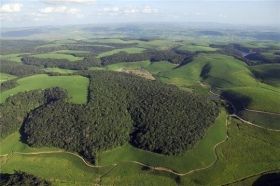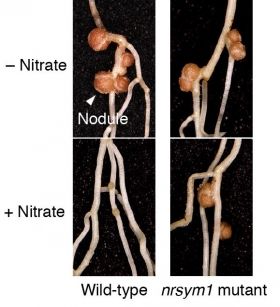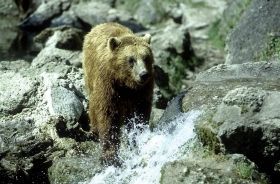
Tropical forests around the world play a key role in the global carbon cycle and harbour more than half of the species worldwide. However, increases in land use during the past decades caused unprecedented losses of tropical forest. Scientists at the Helmholtz Centre for Environmental Research (UFZ) have adapted a method from physics to mathematically describe the fragmentation of tropical forests. In the scientific journal Nature, they explain how this allows to model and understand the fragmentation of forests on a global scale. They found that forest fragmentation in all three continents is close to a critical point beyond which fragment number will strongly increase. This will have severe consequences for biodiversity and carbon storage.
>> Read the Full Article

Legumes are a widely consumed family of plants that serve as a significant source of dietary protein, fiber, and other essential nutrients. They obtain nitrogen through a specialized process known as nodulation, a symbiotic partnership in which soil bacteria infect the root of a plant, form bulb-like nodules, and convert nitrogen into a plant-friendly form. Understanding how nodulation is regulated may aid environmental efforts to improve legume crop efficiency and reduce the need for chemical fertilizers.
>> Read the Full Article

The field of biomimetics offers an innovative approach to solving human problems by imitating strategies found in nature. Medical research could also benefit from biomimetics, as a group of international experts from various fields, including a wildlife veterinarian and wildlife ecologists from Vetmeduni Vienna, point out using the example of chronic kidney disease. In future research, they intend to study the mechanisms that protect the muscles, organs and bones of certain animals during extreme conditions such as hibernation. The possibilities were published in Nature Reviews.
>> Read the Full Article

Chemical products that contain compounds refined from petroleum, like household cleaners, pesticides, paints and perfumes, now rival motor vehicle emissions as the top source of urban air pollution, according to a surprising NOAA-led study by researchers from CU Boulder and other institutions.
>> Read the Full Article

 ENN
Environmental News Network -- Know Your Environment
ENN
Environmental News Network -- Know Your Environment